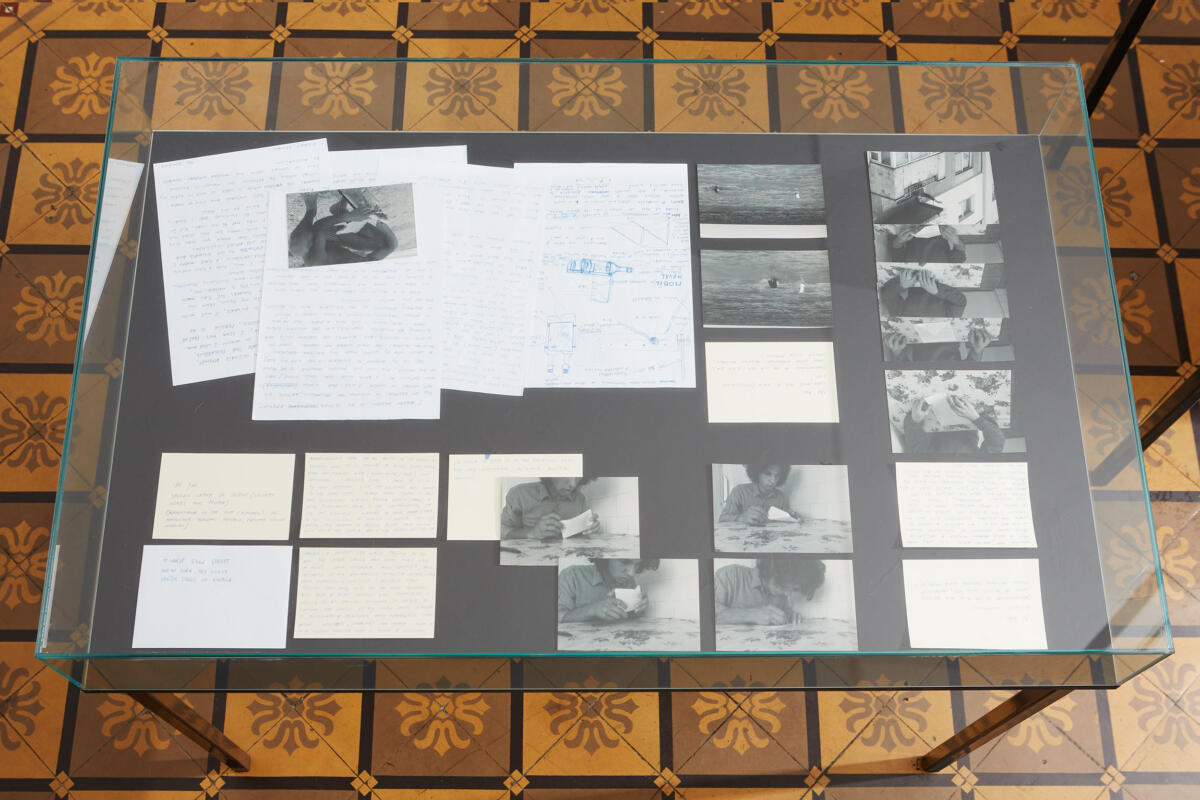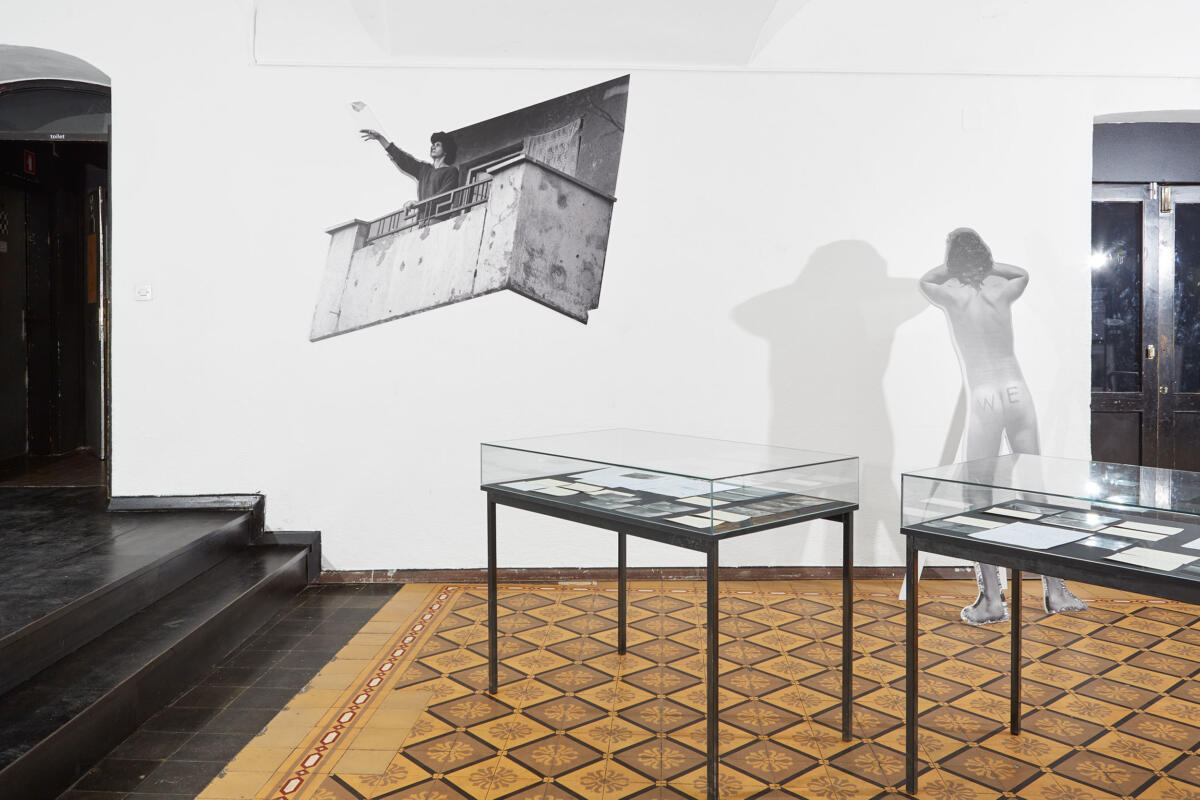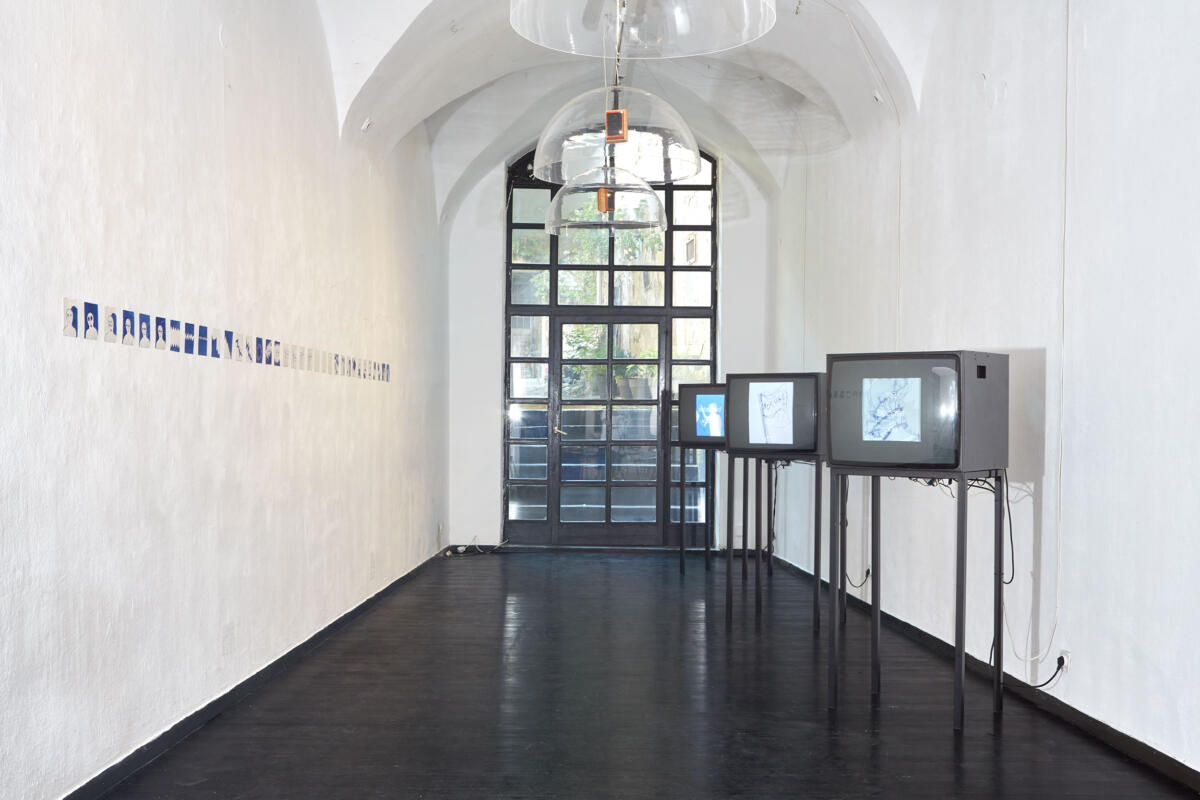![[EN/SI] ‘s.a.b.a. 1979–####’ at Škuc Gallery](https://blokmagazine.com/wp-content/uploads/2020/08/2020-08-10-skuc-s.a.b.a-070-1200x800.jpeg)
[EN]
A retrospective. In the context of an exhibition, it is quite clear what is meant: literally ‘looking back’ on a well-established artist’s oeuvre. The time is defined by art professionals, institutions and the art market, thus being influenced by taste, politics, geographies, personal relations, economic possibilities and access to the means of reaching these options. In their art practice, s.a.b.a. consciously relate their own situation to the success factors of the contemporary world: Romania plays the role of Europe’s source of cheap labour, s.a.b.a. struggle with the lack of access to the institutionalised art world. Political, historical and biographical elements like these are constantly part of s.a.b.a.’s narrations. Through a fictional account, they connect histories not obviously related and discuss politics in a realm opaque to our reality.
Body of Work ’79–’83 (2013–2015), in which s.a.b.a. archive photographs and stories of their beginnings with performances from 1979 onwards, is such an ironic take on the increasing interest from art institutions within the Eastern European art practices. Imitating the aesthetics fetishised from the art world’s perspective, s.a.b.a. fictionally join a canon of famous artists. With small hints, they mock the desire of being recognised in the ‘West’ – a commonplace equivalent to the invisible regime that decides on art trends and who gets a retrospective. Departing from this archive, s.a.b.a.’s practice is translated to this retrospective of their past and future work in complete ignorance of the power of institutional recognition; inverting the market strategies of (re-)creation of events[1] into a preemptive gesture that urges to withdraw its meaning from itself.
Another way of framing the ‘looking back’ is by describing complex relations of historical traces, political decisions or personal feelings that shape a certain event and its perception in historical time. In the often-cited passage on Paul Klee’s Angelus Novus (1920), Walter Benjamin speaks of the ‘pile of debris’, a result of the past catastrophe, the angel of history cannot turn away from, while a storm called progress blows them into a future.[2] In s.a.b.a.’s series of drawings Angelus Novus (2016), the angel’s direction in time is not so clear. The angel’s look, embodied somewhere between an all-seeing eye and a U.F.O., renders economic optimisations the current catastrophe – and gets absorbed by them, leaving no place for change. The impossible ‘after’ reinforces a depression caused by the lack of sense in human actions, where effects and ‘revenues’ are subjected to another speculation.[3] Rooted in economic calculus it seems even rational that there is nothing but the calculation of the future: an oracle applied to the uncertainty of individuals exposed to its effects.
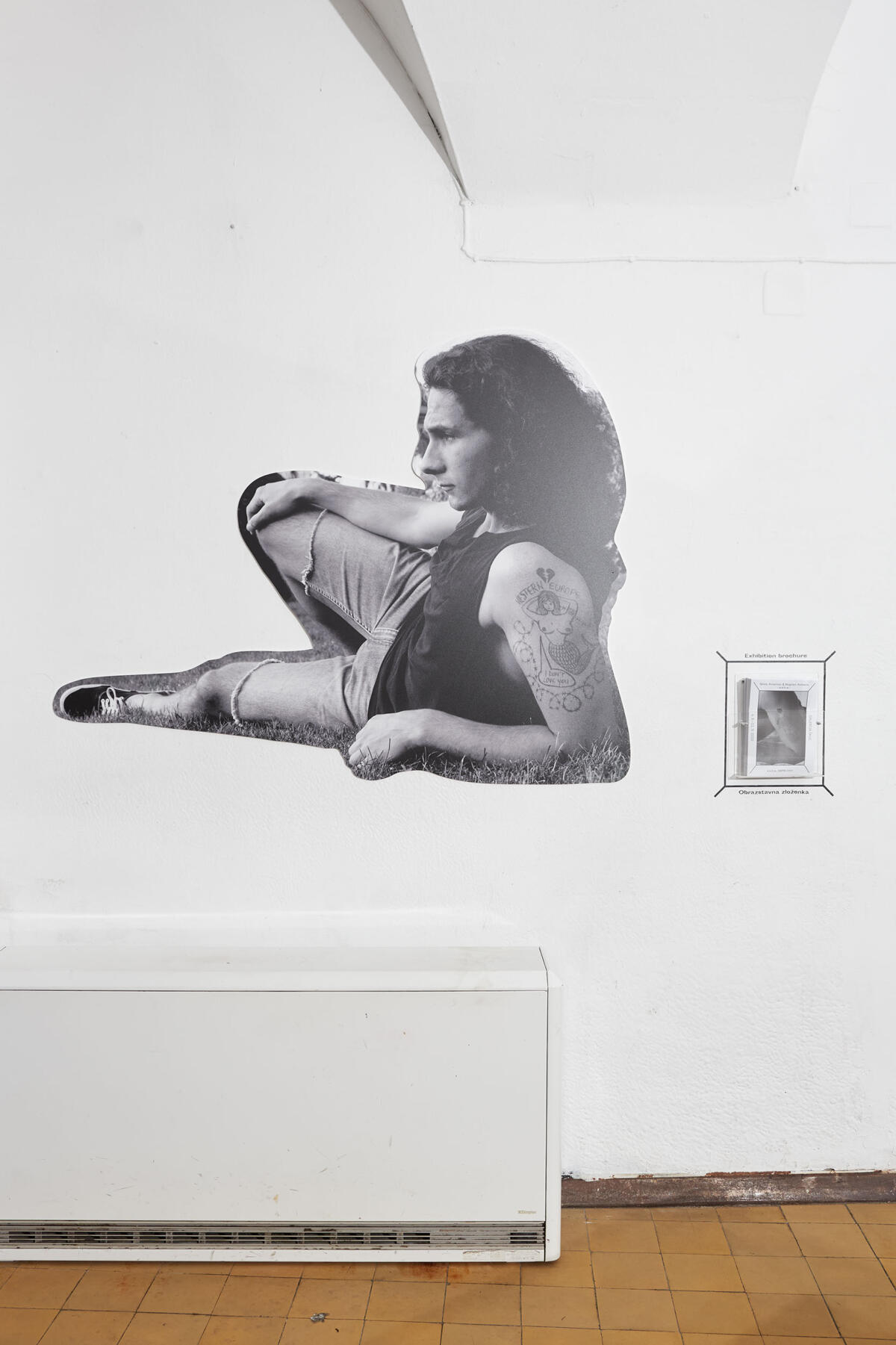

The oracle does not reveal, she just starts a process of infinite interpretation.
The interpretation is our future.
The prophet is like the poet who is not revealing any truth […][4]
While prophets, poets and their technological equivalents infer from the present, the three Poems (2016) intensify the depression. The techno loops give a soundtrack to the all-time – even spare time – impossibility of escaping the structures of work. The two artists look at a world in which capitalism reigns. They try to cope with everything already fucked up, go into micro-analyses of past and future, how single decisions driven by the urge for more (money, power, privilege, champagne) lead to suffering. Whereas earlier works deal with that theoretically, (How to) Migrate Towards a Future? (2019) starts with a personal journey from Romania to ‘Europe’ situating their lives in the effects of economic calculations. s.a.b.a. grew up in a country shaped by their aftermath, their lives blend into the exploitation of cheap workers and politics supporting this system. Untangling single threads in the video objects to the historical chronology[5] fulfilling itself, from the oracle to its future.
The mini-series Unlovable Prospects (2020) twists the chronology once more, relating all layers of time to each other, revealing them as a mix of TV footage, movies, other artists’ works blurred with layers of cut-outs and starring themselves – thereby arranging dark futures which refuse to be prophecies or scenarios:
- If we want to unscript the future, we must darken it.
- Darkening the future is an ontological and political operation thanks to which we can negate the futures that we reject.
- The projection of the future must be raised against what we do not want in order to promise what we want. […] A promise is a metaphorical support thanks to which we can desire, from now, the wild wind of tomorrow.[6]
[1] Cf. Cristina Baldacci: Reenactment: Errant Images in Contemporary Art, in: C. Holzhey/A. Wedemeyer (eds.), RE- An Errant Glossary, Berlin: ICI 2019, pp. 25-34. Baldacci’s account refers to layers of counter-narratives of history, reenactments of the non-accessible as well as their capitalization. This text can only hint to the ways in which s.a.b.a. try to refrain from all these strategies and invert them once more.
[2] Cf. Walter Benjamin: Über den Begriff der Geschichte (Kritische Gesamtausgabe, Vol. 19), Berlin: Suhrkamp 2010, pp. 35-36.
[3] They only lack the positive ‘as-if” for the effects of actions that might lead out of depression despite uncertainty. Cf. Franco Berardi: After the Future, Oakland/Edinburgh: AK Press 2011, pp. 64-68 and 162-164.
[4] Cf. Franco Berardi: The Oracle, in: Alienocene. Journal of the First Outernational (11 June 2018). URL: https://alienocene.com/2018/06/11/the-oracle/.
[5] For this idea of relating chronological time and history, and the critique that historical connections do not necessarily depend on or follow chronological order, cf. Siegfried Kracauer: Time and History, in: idem, Geschichte – Vor den letzten Dingen (Werke, Vol. 4), Frankfurt: Suhrkamp, pp. 377-393, here: 378-379.
[6] Frédéric Neyrat: Occupying the Future. Time and Politics in the Era of Clairvoyance Societies, in: S. Witzgall / K. Stakemeier (eds.), The Present of the Future, Zurich/Berlin: diaphanes 2017, pp. 79-90, here: 89-90.
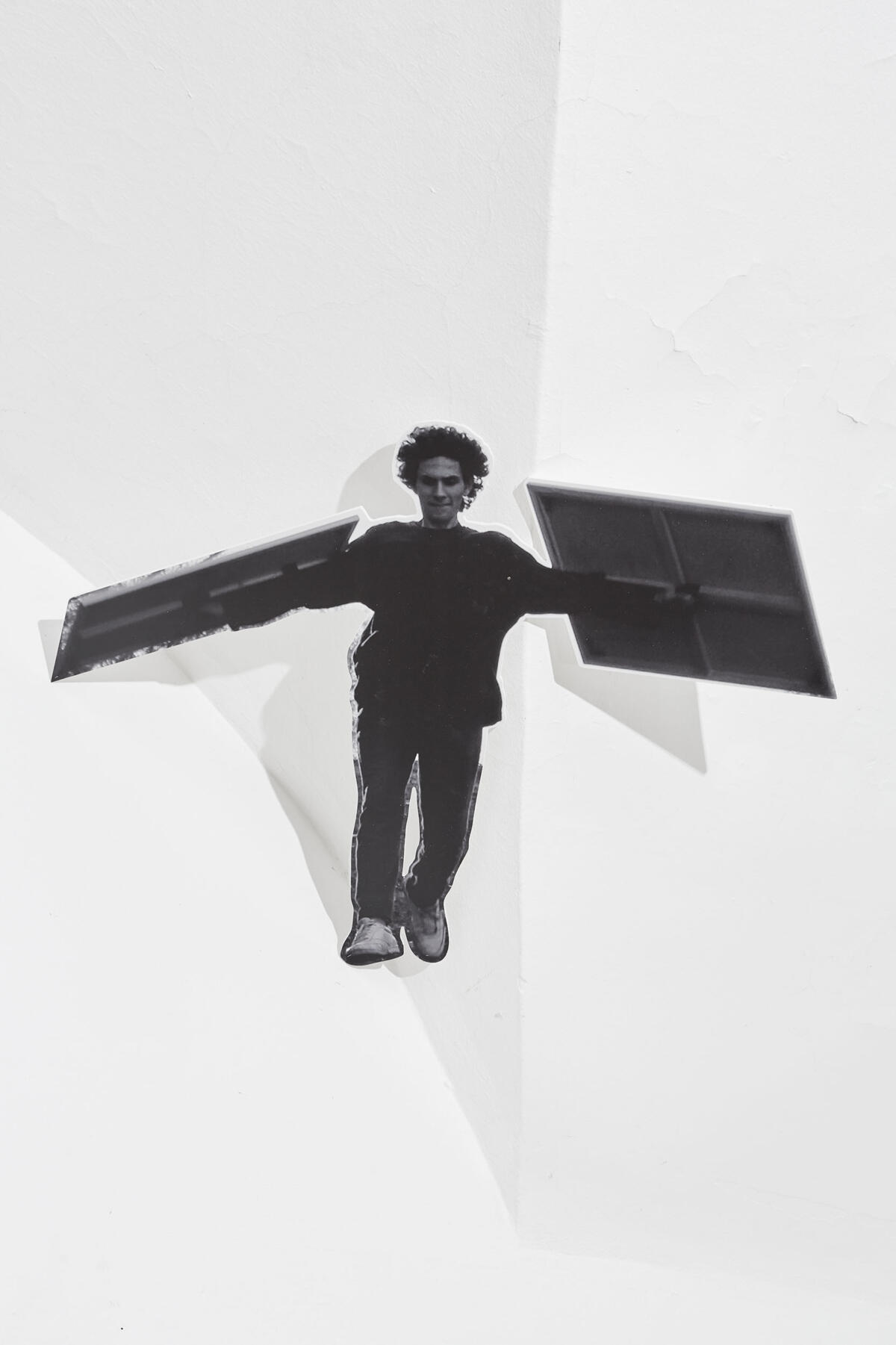

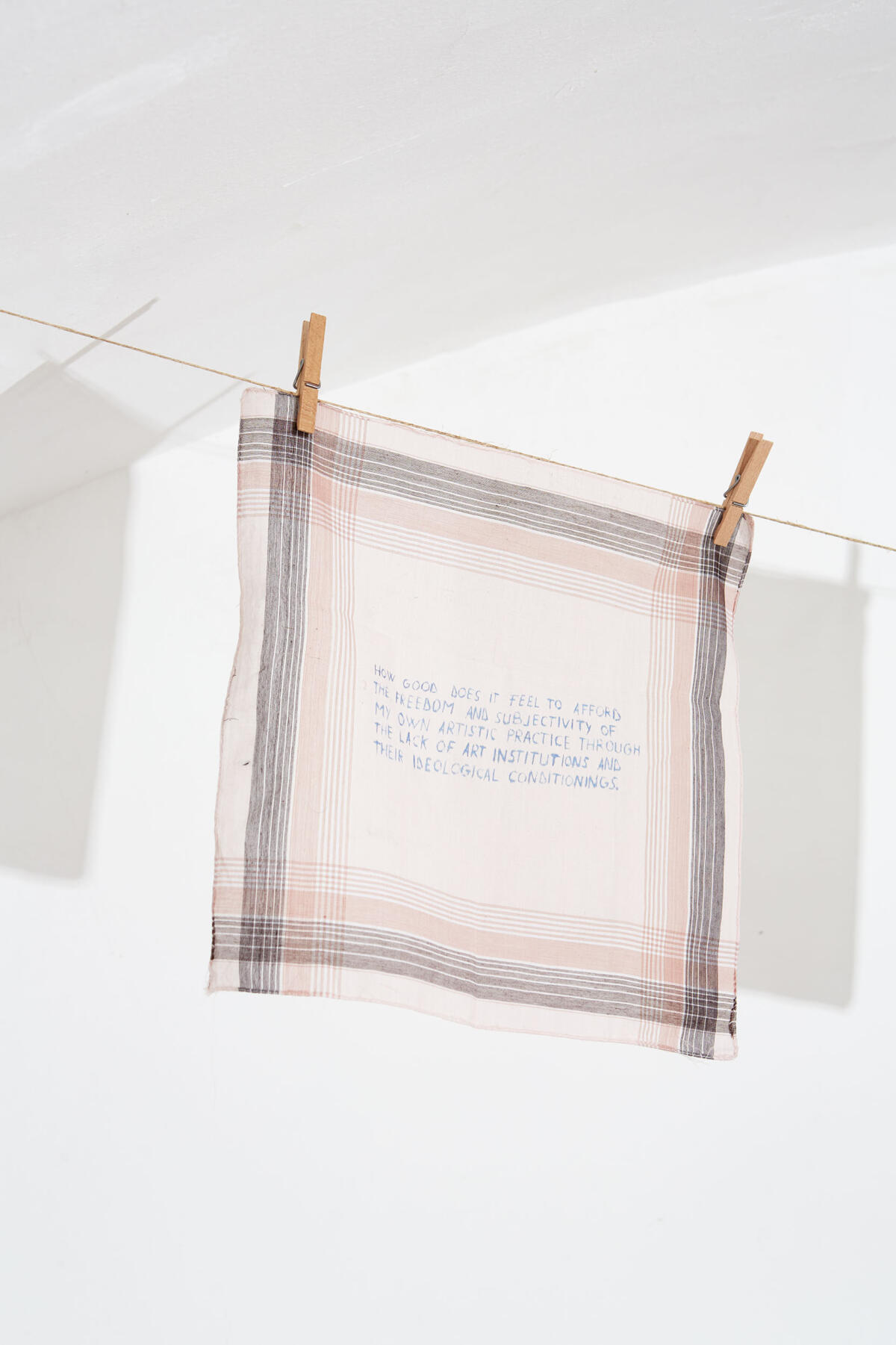


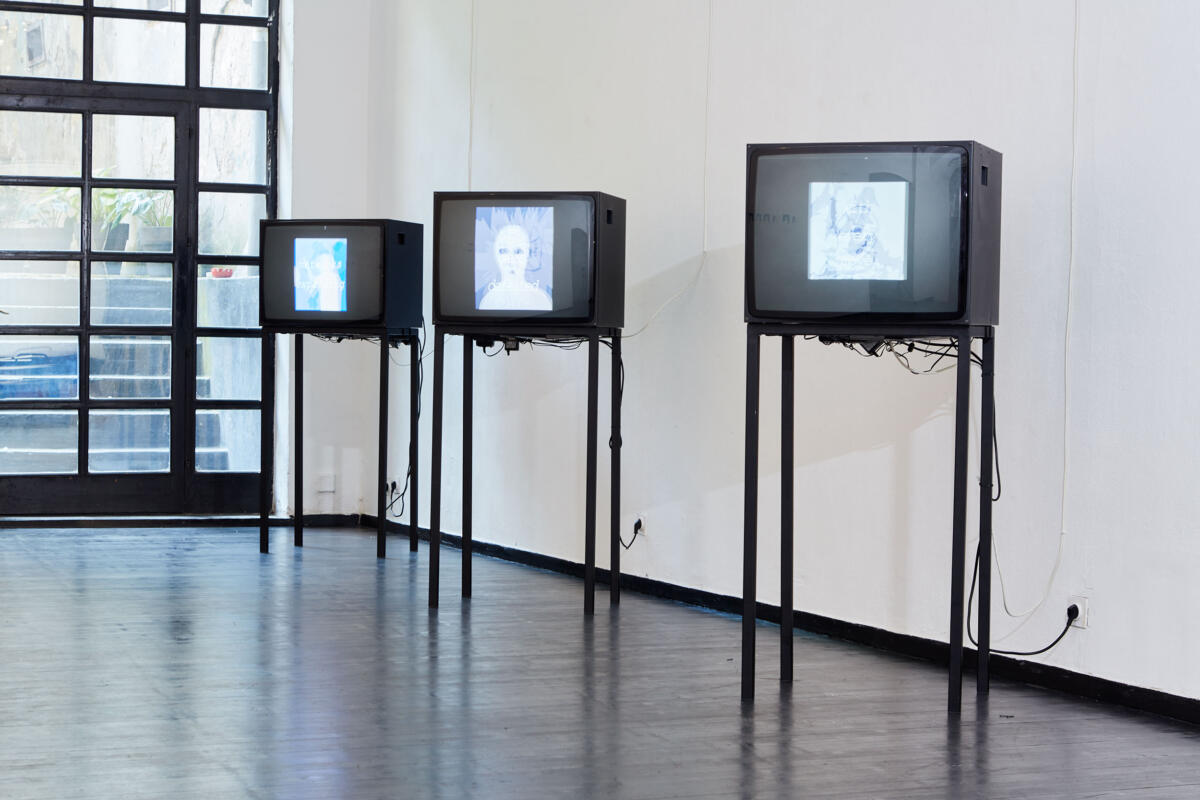
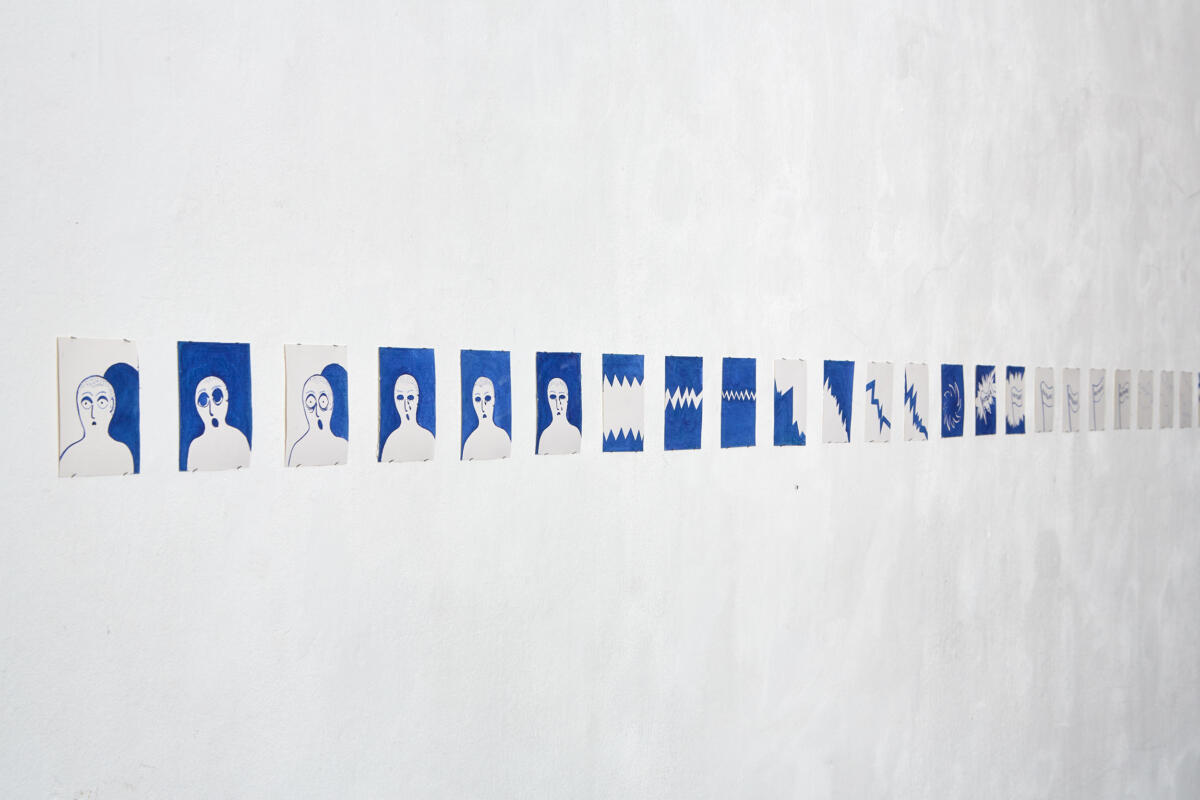
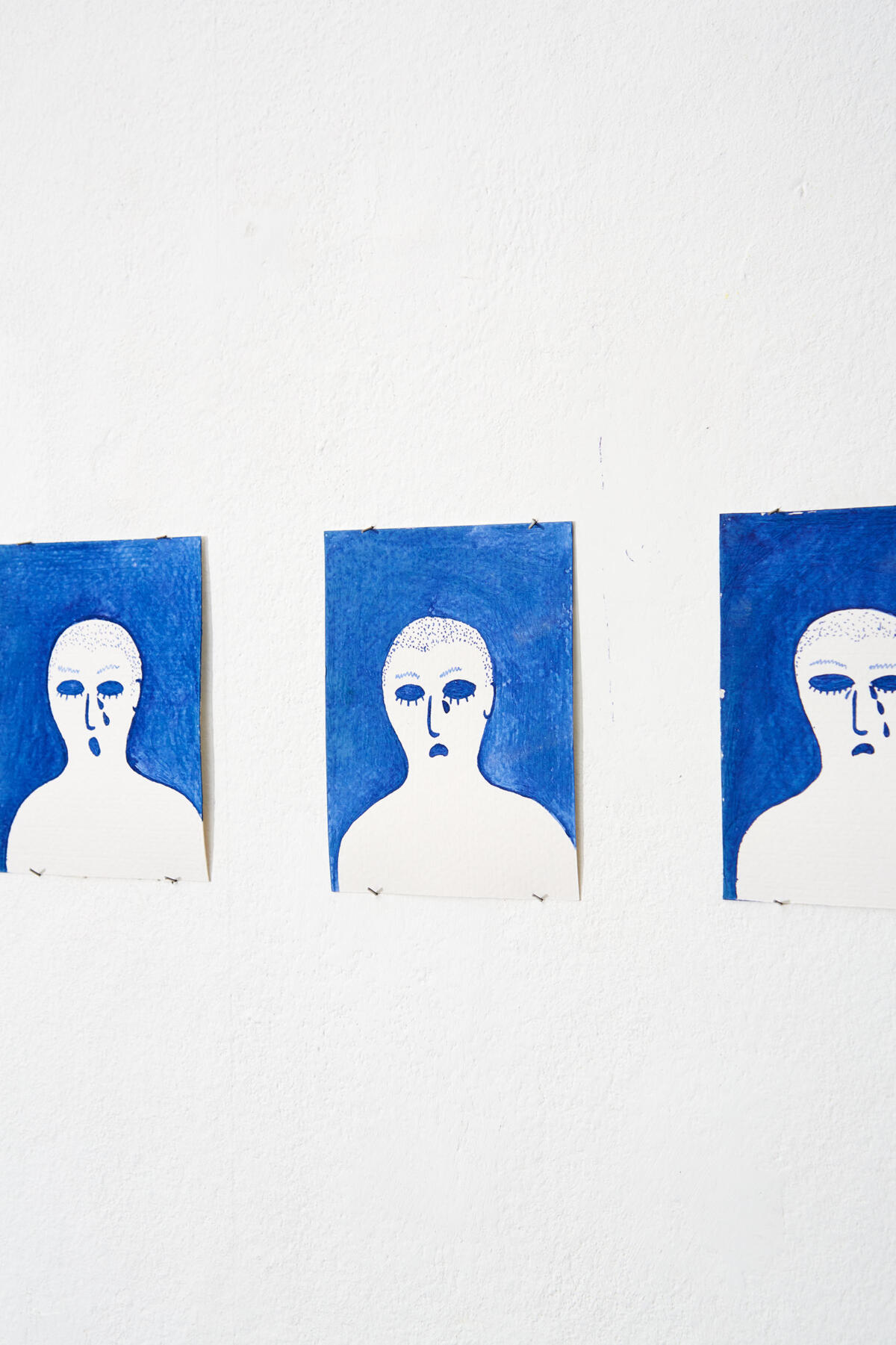

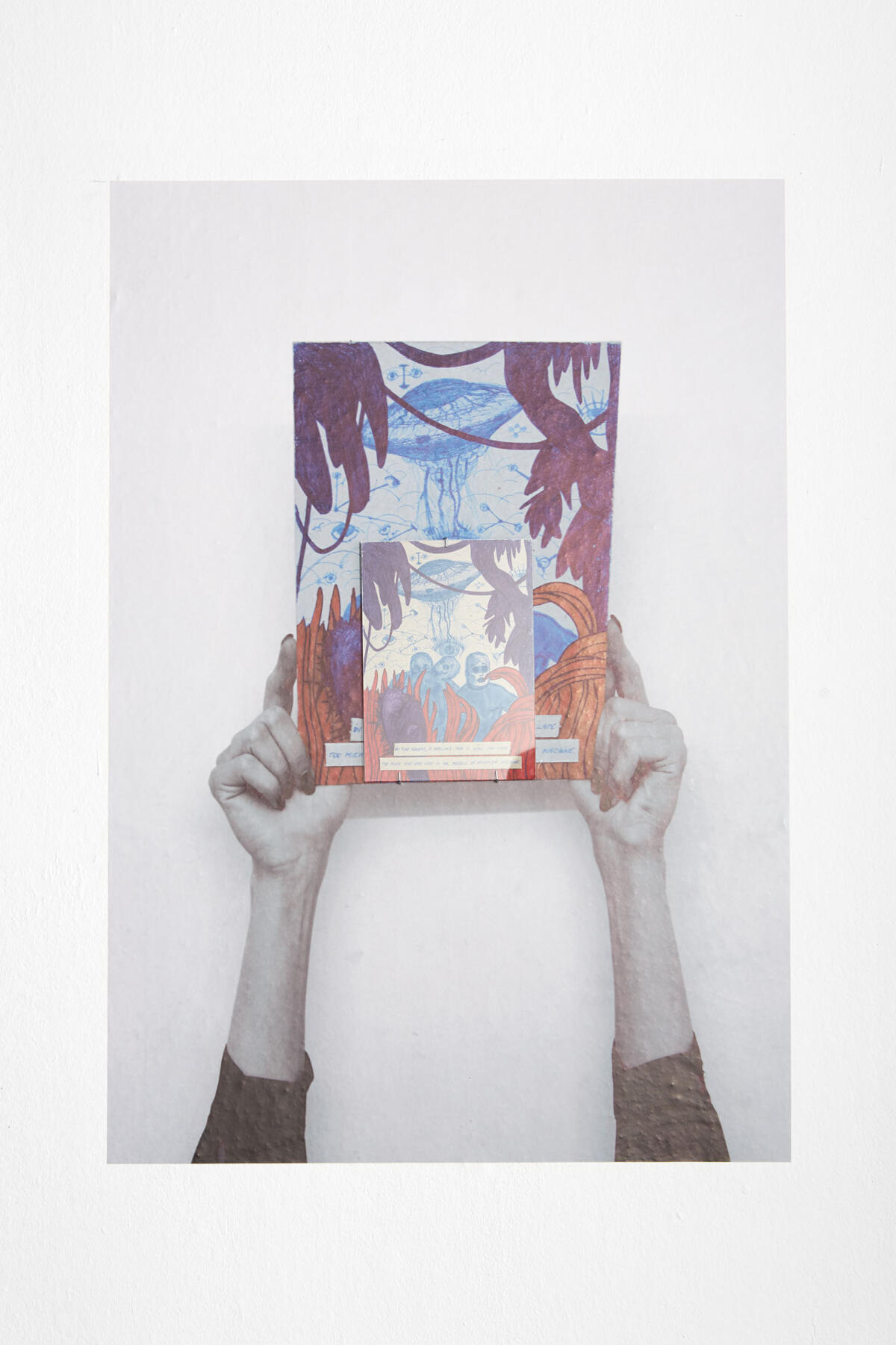
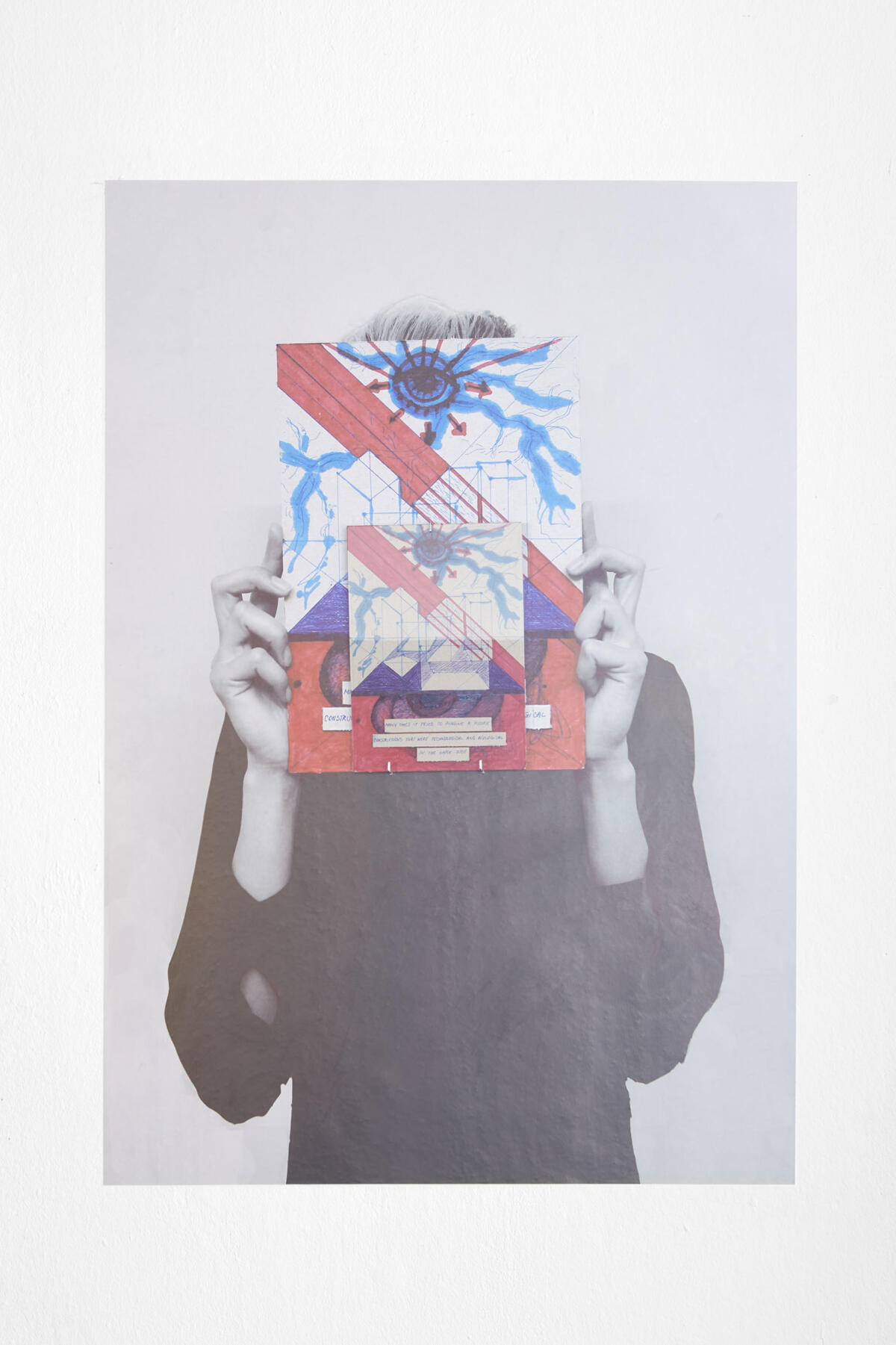
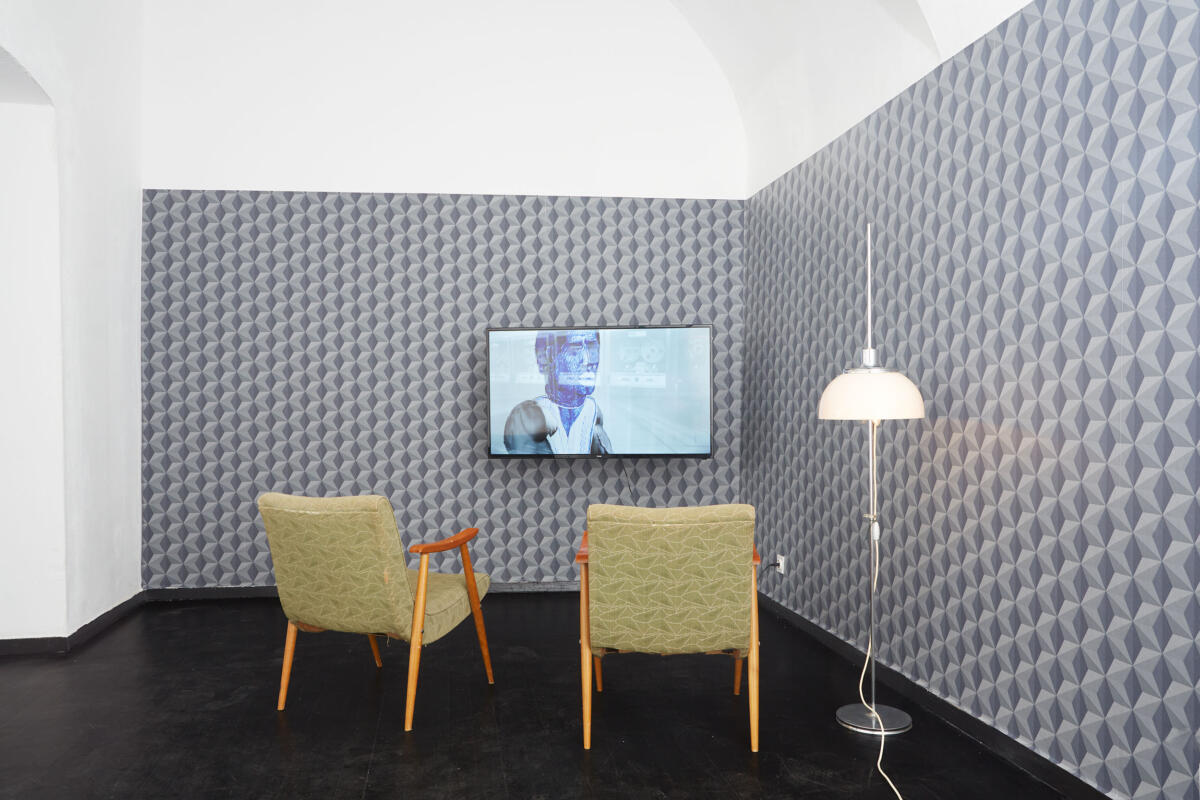
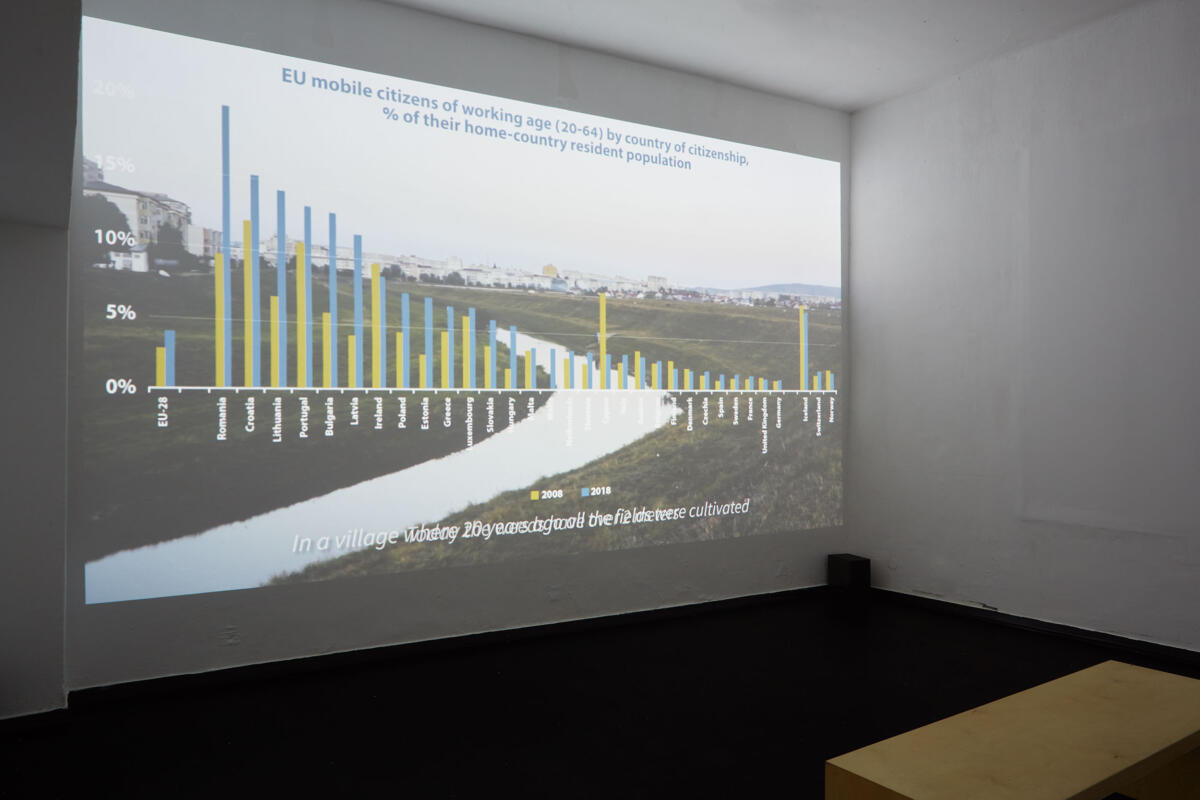
[SI]
Retrospektiva. V okviru razstave je povsem jasno, kaj pomeni: dobesedno »gledanje nazaj« na že uveljavljen umetniški opus. Čas opredeljujejo umetnostni strokovnjaki, ustanove in umetnostni trg, nanje pa vplivajo okus, politika, geografije, osebni odnosi, gospodarske možnosti in dostop do sredstev za dosego le-teh. V svoji umetniški praksi s.a.b.a. zavestno sopostavljata svoj položaj in dejavnike uspeha v sodobnem svetu: Romunija igra vlogo evropskega vira poceni delovne sile, s.a.b.a. pa se borita proti pomanjkanju dostopa do institucionaliziranega sveta umetnosti. Takšni politični, zgodovinski in biografski elementi so stalnica njune naracije. Skozi izmišljeno pripoved namreč povezujeta nesorodne zgodovine in razpravljata o politiki v nejasnosti naše realnosti. Tak ironičen povzetek zanimanja umetnostnih institucij za vzhodnoevropske umetniške prakse je Body of Work ’79–’83 (2013–2015), v katerem s.a.b.a. arhivirata fotografije in zgodbe svojih začetkov s performansi od leta 1979 naprej. S posnemanjem od sveta umetnosti zveličane estetike se navidezno pridružujeta kanonu znanih umetnikov. Z majhnimi namigi se posmehujeta želji biti prepoznan na Zahodu, vsakdanjemu ekvivalentu nevidnega sistema, ki odloča o umetniških trendih in o tem, kdo si zasluži retrospektivo. Izhajajoč iz tega arhiva, je delovanje s.a.b.a prevedeno v retrospektivo njunega preteklega in prihodnjega ustvarjanja, pri čemer popolnoma ignorirata moč institucionalnega pripoznanja in tržne strategije (ponovnega) kreiranja dogodkov[1] prevračata v predvidljivo gesto, ki kliče po razvrednotenju.
Drug način zamejevanja »gledanja nazaj« je lahko opisovanje zapletenih odnosov zgodovinskih sledi, političnih odločitev ali osebnih občutkov, ki ustvarijo nek dogodek in njegovo dojemanje v zgodovinskem času. Walter Benjamin v pogosto citiranem odlomku o Angelu Novusu Paula Kleea (1920) govori o »kupu razvalin«, posledicah pretekle katastrofe, od katerih se angel zgodovine ne more odvrniti, medtem ko jih nevihta, imenovana napredek, odpihne v prihodnost.[2] V seriji risb Angelus Novus (2016) angelova časovna usmerjenost ni tako jasna. Angelov pogled, nekaj med vsevidnim očesom in neznanim letečim predmetom, predstavlja gospodarske optimizacije kot katastrofo današnjosti, ki ga tako prevzamejo, da ni prostora za spremembe. Ta nemogoči »potem« okrepi zastoj, povzročen s pomanjkanjem smisla v človeškem ravnanju, pri čemer so učinki in »prihodki« stvar neke druge preračunljivosti.[3] Ekonomski izračun se tako kaže, kot da je racionalen izračun prihodnosti: orakelj, apliciran na negotovost posameznikov, ki so izpostavljeni njegovim učinkom.
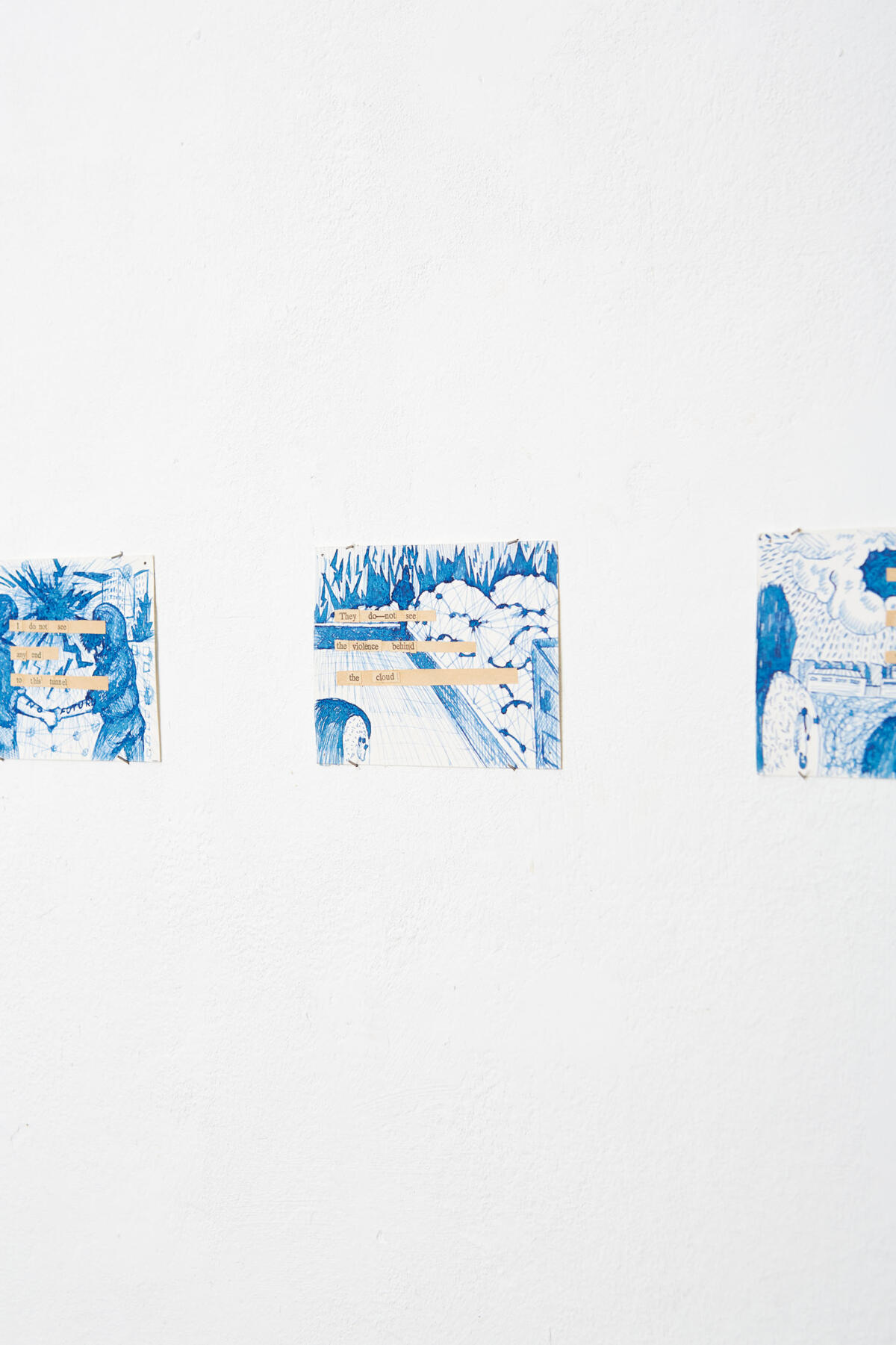
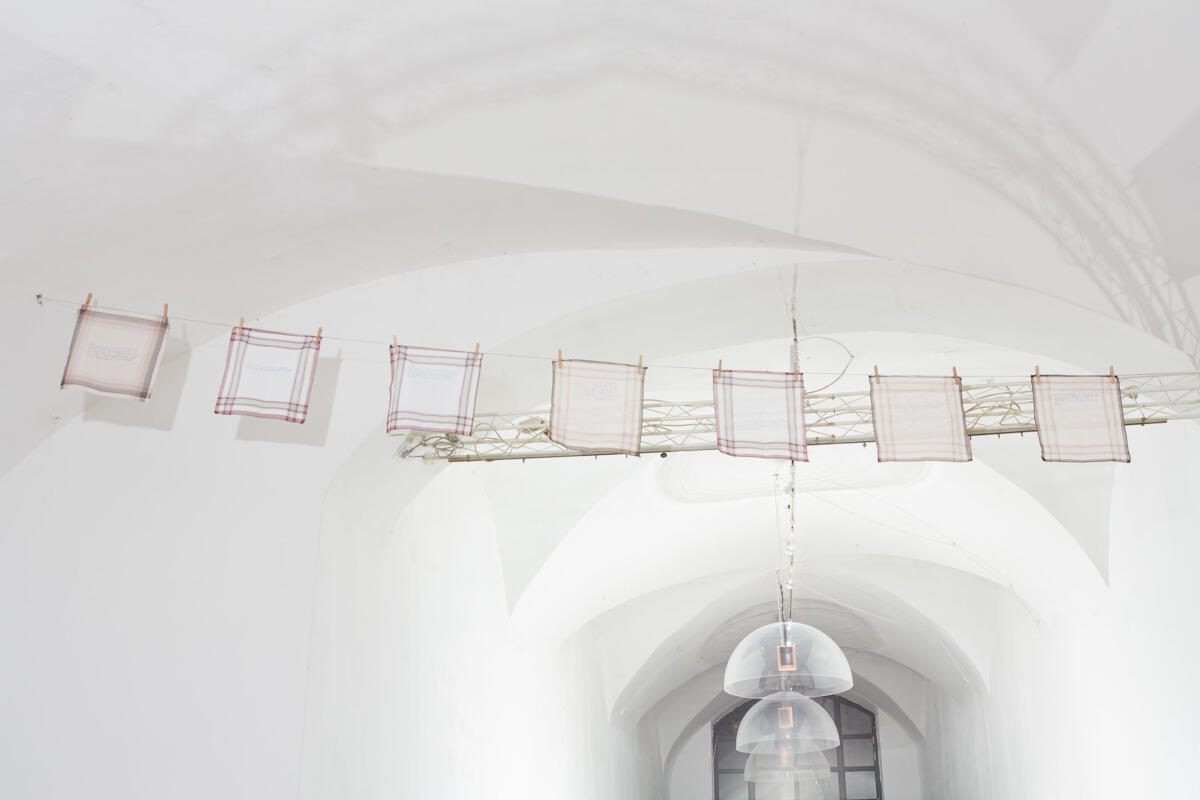
The oracle does not reveal, she just starts a process of infinite interpretation.
The interpretation is our future.
The prophet is like the poet who is not revealing any truth […][4]
Medtem ko preroki, pesniki in njihovi tehnološki ustrezniki povzemajo sedanjost, tri pesmi v delu Poems (2016) stopnjujejo depresijo. Tehnozanke zvočno zapišejo celoten čas – tudi prostega –, saj strukturam dela ni mogoče ubežati. Oba umetnika gledata svet, ki mu vlada kapitalizem. Spoprijeti se skušata z vsem že zafuranim, mikroanalizirati preteklost in prihodnost, ko posamezne odločitve, gnane z željo po več (denarja, moči, privilegijev, šampanjca), privedejo do trpljenja. S to tematiko se v zgodnejših delih ukvarjajta teoretično, medtem ko je (How to) Migrate Towards a Future? (2019) njuno osebno potovanje iz Romunije v »Evropo«, ki ju izpostavi učinkom ekonomskih izračunov. s.a.b.a. sta odraščala v državi, izoblikovani od posledic, njuno življenje se je premešalo z izkoriščanjem poceni delavcev in s politikami, ki tak sistem podpirajo. Odmotavanje posameznih niti v videih je v nasprotju z zgodovinsko kronologijo,[5] ki se (samo)izpolnjuje od oraklja do svoje prihodnosti.
Miniserija Unlovable Prospects (2020) kronologijo še enkrat zasuka, saj med seboj povezuje vse sloje časa in jih razkriva kot mešanico televizijskih posnetkov, filmov, drugih umetniških del, zabrisanih s plastmi izrezov z umetnikoma v glavni vlogi − s tem določa temne prihodnosti, ki nočejo biti prerokbe ali scenariji:
- If we want to unscript the future, we must darken it.
- Darkening the future is an ontological and political operation thanks to which we can negate the futures that we reject.
- The projection of the future must be raised against what we do not want in order to promise what we want. […] A promise is a metaphorical support thanks to which we can desire, from now, the wild wind of tomorrow.[6]
[1] Cf. Cristina Baldacci: Reenactment: Errant Images in Contemporary Art, v: C. Holzhey/A. Wedemeyer (eds.), RE- An Errant Glossary, Berlin: ICI 2019, str. 25-34. Baldaccijina trditev se nanaša na plasti nasprotujočih si narativov, posnetke nedostopnih in tudi kapitalizacijo obojih. V besedilu lahko samo sugeriram, na kakšne načine se skušata s.a.b.a. vzdržati vseh teh strategij in jih še enkrat obrniti.
[2] Cf. Walter Benjamin: Über den Begriff der Geschichte (Kritische Gesamtausgabe, Vol. 19), Berlin: Suhrkamp 2010, str. 35-36.
[3] Umanjkajo le pozitivne »kot da bi« posledice za dejanja, ki znajo navkljub negotovosti voditi iz depresije. Cf. Franco Berardi: After the Future, Oakland/Edinburgh: AK Press 2011, str. 64-68 in 162-164.
[4] Prerokinja ne razkrije, samo začne postopek neskončne interpretacije. Razlaga je naša prihodnost. Prerokinja je kot pesnica, ki ne razkriva nobene resnice […], cf. Franco Berardi: The Oracle, in: Alienocene. Journal of the First Outernational (11 June 2018). URL: https://alienocene.com/2018/06/11/the-oracle/.
[5] Za idejo o povezovanju kronološkega časa in zgodovine s kritiko, da zgodovinske povezave niso nujno odvisne ali sledijo kronološkemu zaporedju, cf. Siegfried Kracauer: Time and History, v: idem, Geschichte – Vor den letzten Dingen (Werke, Vol. 4), Frankfurt: Suhrkamp, str. 377-393, tu: 378-379.
[6] a. Če želimo odkriti prihodnost, jo moramo zatemniti. b. Zatemnitev prihodnosti je ontološka in politična operacija, s pomočjo katere lahko izničimo prihodnost, ki jo zavračamo. c. Projekcija prihodnosti se mora osredotočiti na tisto, česar ne želimo, da bi obljubili, kar želimo. […] Obljuba je metaforična podpora, zahvaljujoč kateri si lahko od zdaj želimo divjega vetra jutrišnjega dne. v: Frédéric Neyrat: Occupying the Future. Time and Politics in the Era of Clairvoyance Societies, v: S. Witzgall / K. Stakemeier (eds.), The Present of the Future, Zurich/Berlin: diaphanes 2017, str. 79-90, tu: 89-90.
Imprint
| Artist | Silvia Amancei & Bogdan Armanu (s.a.b.a.) |
| Place / venue | Škuc Gallery, Ljubljana, Slovenia |
| Dates | 6 August – 11 September |
| Curated by | Maximilian Lehner |
| Photos | Klemen Ilovar |
| Website | www.galerijaskuc.si/ |
| Index | (s.a.b.a.) Bogdan Armanu Maximilian Lehner Silvia Amancei Škuc Gallery |

